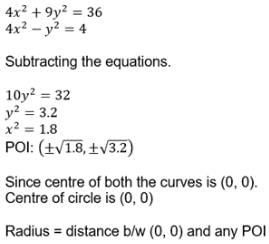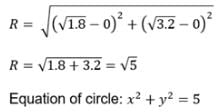HP TET TGT Non Medical Mock Test - 1 - HP TET MCQ
30 Questions MCQ Test HP TET Mock Test Series 2025 - HP TET TGT Non Medical Mock Test - 1
In an extempore speech, the principal of a school asked the students to focus more on vocabulary. He opined that they must adopt the habit of learning the correct use of words. What according to you is the intelligence that is associated with the ability of students to use words effectively?
A child's intellectual development includes four stages, which are the sensory-motor, preoperational, concrete operational and formal operational periods. These four characteristic stages of a child's intellectual development were proposed by
Directions: Answer the following question by selecting the most appropriate option.
A teacher, after preparing a question paper, checks whether the questions test specific Testing objectives. He is concerned primarily about the question paper's
A teacher, after preparing a question paper, checks whether the questions test specific Testing objectives. He is concerned primarily about the question paper's
Ria does not agree with Rishabh about setting up a class picnic. She thinks that the rules can be revised to suit the majority, this kind of peer disagreement according to Piaget, refers to:
During Classes I, II, and III, children can learn from the symbolic experiences of reading books and listening to stories. However, their understanding of what they read is based on their ability to relate the ______.
Teachers who work under School-Based Assessment_____.
Reduction is defined in terms of
I. electronation and hydrogenation
II. deelectronation and gain of oxygen
III. increase in oxidation number
IV. decrease in oxidation number
Select the correct terms
What is the general chemical equation for the reaction between an acid and a metal hydrogen carbonate?
What is the lowest value of n that allows g orbital to exist?
What will be the wavenumber of yellow radiation having wavelength 240 nm?
If we double the radius of a current carrying coil keeping the current unchanged. what happens to the magnetic field at its Centre?
If the light is completely polarized by reflection, then angle between the reflected and refracted light is
The magnetic field B on the axis of a circular coil at distance x far away from its centre are related as:
Light is confined within the core of a simple optical fiber by:
A microscope is focused on an ink mark on the top of a table. If we place a glass slab 3cm thick on it, how should the microscope be moved to focus the ink spot again? The refractive index of glass slab is 1.5 cm.
A car battery has ________ resistance than a dry cell.
A train is travelling on a curve of 350 m radius at 7 Km/hr. Through what angle will it turn in one minute?
Given the sets A = {1, 2, 3}, B = {3, 4}, C = {4, 5, 6}, then A ∪ (B ∩ C) is
The equation 2x2 – 3xy + 5y2 + 6x – 3y + 5 = 0 represents.
A = {1, 2, 3, 4, 5} and B = {2, 3, 7} So A – B =?
If A = {1, 2, 3, 4} and B = {4, 5, 6, 7, 8}, then A U B = ?
The ellipse 4x2 + 9y2 = 36 and the hyperbola 4x2 – y2 = 4 have the same foci and they intersect at right angles then the equation of the circle through the points of intersection of two conics is
Where is Nicholas Roerich Art Gallery And Museum located in Himachal Pradesh?
What do Pabuchi, Pandavani, and Bhatakshari represent?
"Things we make and do" in EVS curriculum is a:
Students of class IVth are asked by their teacher to discuss "What happens to the food we eat inside our body?" Which of the following is her objective?
Which Indian state has introduced the 'Bag-less School' initiative?
|
50 tests
|



















